Great Ships '22: USS Jack H. Lucas (DDG 125)
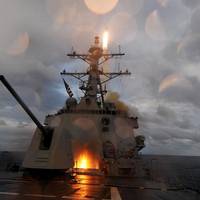
The Arleigh Burke-class Guided Missile Destroyer - The world’s most successful post-war surface combatantsThe USS Arleigh Burke (DDG 51) class of guided missile destroyers can rightfully be called the most successful class of surface combatants in the post-World War II era. The lead ship was commissioned in 1991, and the Navy is still building them at Huntington Ingalls Industries Ingalls Shipbuilding in Pascagoula, Miss., and General Dynamics Bath Iron Works in Bath, Maine. A total of 89 have been procured through FY2022…
Shipbuilding: Fincantieri Marine Group Invests Mightily to Deliver for the US Navy
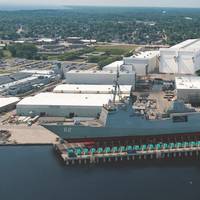
When he served as the commander of NWSC Carderock, Mark Vandroff woke every morning knowing that his counterpart in China had just gone to bed and had spent that day trying to make China’s Navy superior. His job, he figured, was to “get cracking and work to make our Navy even better.” Now the CEO at Fincantieri Marinette Marine (FMM), Vandroff brings that passion for navy shipbuilding – and delivering on the new USN Constellation-class frigates contract – to work every day.Introducing a new class of warship usually comes with a heaping helping of pain, from cost overruns to technical glitches.
U.S. Navy: Constellation-class Brings Frigates Back to the U.S. Fleet
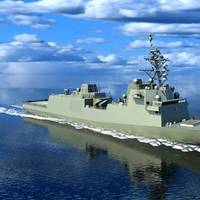
Introducing a new class of warship can be fraught with pain, and the first ship is always the hardest – almost always behind schedule and over budget. And trying something new and transformational is even harder.The U.S. Navy knows this from experience. That’s one reason why the Navy is opting for a lower risk design for its next class of guided missile frigates (FFGs).Just about every new class has experienced a rough start. Although the USS Arleigh Burke-class of guided missile destroyers (DDGs) today represent the largest and most successful class of warships…
World Navies Report: Denmark

Navies operate on a spectrum between deterrence and defense, to include offensive operation, support of foreign policy, and power projection to civil affair and humanitarian assistance and disaster response. Many have constabulary responsibilities, and it could be argued that, with the exception of the largest navies, most are more like a coast guard than a military force in their normal responsibilities.Every Navy is different. Yes, they all share similar challenges of acquisition…
US Navy: Bigger is Better, but at What Cost?
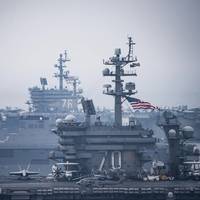
The U.S. Navy has a balanced fleet, but it wants to grow bigger and better. Will the budget allow both? Maritime Reporter's March 2017 cover story on the U.S. Navy was all about the numbers. There exists several plans to grow the fleet beyond the current number of 308 ships, the Mitre recommendation of 414 ships, the Center for Strategic and Budgetary Assessment 340-ship proposal, and the Navy’s decision to grow the fleet to 355 ships, and the Trump administration’s 350. With so many numbers being bandied about, there are even more suggestions on how to get there.
Navy Maritime Tactical Unmanned Air Systems
Images of remotely piloted aircraft soaring over a naval fleet might seem like an ultramodern picture. But unmanned aircraft are nothing new to the Fleet Air Arm, which has provided remotely piloted targets for gunnery practice since 1953. This started with the jet-powered Jindivik pilotless aircraft being used as a target, then for target towing before retirement in 1998. Sea Sparrow missiles were tested by firing at Kalkara aircraft, the Jindivik’s successor. Navy now has a different generation of remotely piloted aircraft in mind with fixed and rotary-wing maritime tactical unmanned air systems undergoing evaluation. The first of these is the ScanEagle…
Sea Sparrow Success
HMAS Melbourne has launched an Evolved Sea Sparrow Missile in a test off the east coast of Australia recently. The missile is a short range, self defence weapon, optimised for anti-ship missile defence. In the recent test, Melbourne’s combat system tracked and engaged, a Pheonix Jet unmanned aerial vehicle target drone operated by Air Affairs Australia. Melbourne's Air Warfare Officer, Lieutenant Rhys Ryan said the activity went smoothly. “The firing took months of preparation to understand the combat system, and how it’s various components integrated with each other,” he said. Able Seaman Electronics Technician Nazmi Kenar performed the role of Fire Control Officer, responsible for coordinating and controlling the full weapon systems under the direction of the Air Warfare Officer.
US Navy Accepts Delivery of Future USS Zumwalt
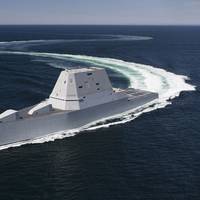
The U.S. Navy has accepted delivery of future USS Zumwalt (DDG 1000), the lead ship of the Navy's next-generation of multimission surface combatants, May 20. DDG 1000 is tailored for sustained operations in the littorals and land attack, and will provide independent forward presence and deterrence, support special operations forces, and operate as an integral part of joint and combined expeditionary forces. Ship delivery follows extensive tests, trials and demonstrations of the ship's hull…
Australian Frigate Conducts Missile Exercise
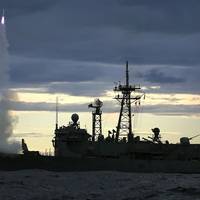
The Royal Australian Navy Adelaide class frigate HMAS Melbourne fired two Evolved Sea Sparrow Missiles as part of an operational training exercise reinforcing her war-fighting and mariner skills. The missiles were fired off the coast of New South Wales on June 24 against two unmanned aerial targets launched from the Beecroft Range at Jervis Bay. Melbourne’s MK-41 Vertical Launch System deployed the missiles, controlled in flight, resulting in a successful engagement with the target as part of her operational training program.
Melbourne Fires Evolved Sea Sparrow Missiles
The Royal Australian Navy Adelaide class frigate, HMAS Melbourne, has successfully fired two Evolved Sea Sparrow Missiles, reinforcing her war-fighting and mariner skills. The missile firings were conducted off the coast of New South Wales on 24 June against two unmanned aerial targets launched from the Beecroft Range at Jervis Bay. Melbourne’s MK-41 Vertical Launch System deployed the missiles, controlled in flight, resulting in a successful engagement with the target as part of her operational training program. Navy ships conduct mariner and war-fighting training all year round to prepare for operational duties and Commanding Officer Melbourne, Commander Bill Waters, said the firing proved the effectiveness of the frigate’s combat systems.
USS America: LHA with an Aviation Focus
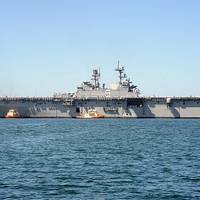
The U.S. Navy’s newest Amphibious Assault Ship, USS America (LHA 6) was commissioned on October 11, 2014 at Pier 30-32 in San Francisco. First in its class, the USS America does not have a well deck, unlike her previous counterparts, thus making the USS America an LHA with an aviation focus. The removal of the well deck allows USS America to have larger hangar facilities and more capacity for aviation fuel and munitions. The U.S. Navy points out that, “In lieu of a well deck,…
Two Singaporean Boats Detained by Indonesia
Two Singapore-registered vessels have been detained in Indonesia the Maritime and Port Authority of Singapore (MPA) said. The sole Singaporean who was caught along with those ships is a marine surveyor and he returned to Singapore on March 16. MPA also said it was assisting Indonesia in the investigations of the two separate incidents. Recent media reports had quoted that four Singapore-registered vessels and four Singaporeans were detained. Indonesia said it had detained a total of four Singapore-registered ships in two incidents in early March, each of which involved boats that allegedly did not have proper papers. MPA clarified that only two vessels are Singapore-registered and only one person detained is a Singaporean marine surveyor.
Murray Relieves Ver Hage of NSWC Corona's Command
Cmdr. Steve Murray assumed command of Naval Surface Warfare Center, Corona Division from Capt. Eric Ver Hage during a change of command ceremony held Friday, Aug. Rear Adm. Lawrence F. Creevy, commander of the Naval Sea Systems Command Naval Surface Warfare Center, served as the presiding officer and keynote speaker at the ceremony. Creevy presented Ver Hage with the Legion of Merit, praising his significant accomplishments during nearly three years in command, citing strengthened ties across the Navy, expanded community outreach and enhanced partnering with regional business and academia, such as the Navy's award-winning, first patent cross-licensing agreement. In his remarks, Ver Hage celebrated his co-leader, Dr.
US Navy Build Programs Face Budget Pressure
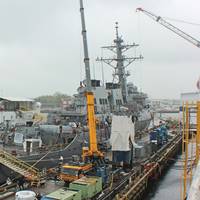
Ship construction programs move ahead, but it’s not smooth sailing. Navies and Coast Guards everywhere face budgetary pressure, even in the U.S. which has the largest Navy in the world. The balance between desire for capacity and capability and pressure for affordability has never been more acute with the precarious budgetary issues presented by declining defense budgets, sequestration, continuing resolutions and government shutdowns. Even so, there are ongoing major construction efforts to include large nuclear aircraft carriers and submarines…
New Navy Contracts
Raytheon Co., Tucson, Ariz., is being awarded a $151,577,441 modification to previously awarded contract (N00024-07-C-5431) to procure 186 Evolved SEASPARROW Missiles (ESSM), 77 shipping containers, and spares for the NATO SEASPARROW Consortium and the United Arab Emirates. Work will be performed in Tucson, Ariz., (45 percent); Camden, Ark., (2 percent); Andover, Mass,. (10 percent), Australia, (11 percent), Canada, (7 percent), Denmark, (1 percent), Greece, (1 percent), Germany, (8 percent), The Netherlands, (6 percent); Norway, (5 percent); Spain, (3 percent); and Turkey, (1 percent), and is expected to be completed by August 2012. Contract funds will not expire at the end of the current fiscal year. The Naval Sea Systems Command, Washington, D.C., is the contracting activity.
Navy Commissions Newest Ship
USS Stockdale (DDG 106), the Navy's newest Arleigh Burke class guided-missile destroyer, was Commissioned at Naval Base Ventura County Port Hueneme on Saturday, April 18, during a formal ceremony featuring H. Ross Perot as the Honorary Chair for the event and Admiral Keating as the Keynote Speaker. The fast warship - which is the same class of Navy ship as the USS Bainbridge deployed to the waters off Somalia to help in the rescue efforts of Capt. Roberts Phillips - will provide multi-mission offensive and defensive capabilities. As the first destroyer named for the Navy's highest ranking POW, the ship embodies the spirit and patriotism of Medal of Honor Recipient Vice Admiral James Bond Stockdale.
Navy Completes Key Design Reviews on DD(X) Program
The U.S. Navy's revolutionary DD(X) destroyer program passed two critical milestones in the past month with the successful completion of Preliminary Design Reviews (PDRs) by the U.S. Navy on two of the ship's subsystems: the Total Ship Computing Environment (TSCE) and the MK 57 Vertical Launching System (VLS). Under a three-year $1.3 billion contract, Raytheon Integrated Defense Systems serves as the weapon and electronic systems integrator for DD(X) -- the next-generation destroyer for the U.S. Navy that will revolutionize naval technology for the 21st century. As part of this effort, Raytheon is completing design work on eight major subsystems, including the TSCE and the MK 57 VLS.
USN AEGIS Cruiser Modernization Program

frigate USS Ingraham (FFG 61) during a leap frog training exercise. The exercise allows ship handlers to practice the approach and stabilization alongside and a breakaway in a simulated underway replenishment environment. Ingraham and Antietam are part of the USS Carl Vinson (CVN 70) Carrier Strike Group on deployment in the Western Pacific Ocean. U.S. Navy photo by Photographer's Mate 2nd Class Jeremie Kerns. By Edward H. The U.S. Navy’s “Cruiser Modernization” program will extend…
Feature: Adding Combat Power; Extending Ship Life
By Edward H. The U.S. Navy's "Cruiser Modernization" program will extend the service life and enhance the combat capability of 22 of the Navy's 27 multi-mission AEGIS cruisers (CG-52 through CG-73). The Cruiser Modernization is necessary to enable the CG-47 class to participate effectively in support of joint littoral campaigns. Missions include land attack, littoral undersea warfare, force protection, and anti-air defense, as well as allowing for a possible future Ballistic Missile Defense (BMD) mission. The program extends the service life of each ship to 35 years. Combat systems will be upgraded while crew size and maintenance requirements will be reduced.
Lockheed Martin Passes Design Review
Lockheed Martin marked a milestone in the Norwegian Navy New Frigate program with completion of the Critical Design Review for the Integrated Weapon System. System (IWS). The IWS includes the full complement of ship sensors, weapons, computing suite and communications equipment designed to give the Nansen-class frigates advanced anti-submarine, anti-surface and anti-air capabilities. Based on the U.S. Navy's Aegis combat system, the IWS also will support interoperability of Norwegian Navy ships with those of the United States and other users of the Aegis system. Lockheed Martin is developing the IWS for five new Norwegian frigates being built by the Spanish shipbuilder IZAR Construcciones Navales, SA.
Lockheed Martin Develops SCL
Lockheed Martin and teammate United Defense, LP, have used experience with the MK 41 Vertical Launching System (VLS) to develop a new Single Cell (SCL) launcher. The SCL is intended for ships either too small for the traditional eight-cell MK 41 or with mission requirements not requiring an eight-cell launcher. The SCL will provide an affordable solution for improved ship self defense requirements on aircraft carriers, large-deck amphibious ships, and other smaller surface combatants, such as corvettes and frigates. SCL is based on proven MK 41 technology and incorporates the latest Baseline VII Launch Control System (LCS), and other Computer-off-the-Shelf (COTS) components.
Foster Named as Next Self Defense Test Ship
When the Spruance-class destroyer USS Paul F. Foster (DD 964) is decommissioned next March, it will find new life as the next Self Defense Test Ship (SDTS) at Naval Surface Warfare Center Port Hueneme. The Chief of Naval Operations' Surface Warfare Division announced that Paul F. Foster would become the next dedicated ship self defense test and evaluation platform assigned to Port Hueneme, in a message to Commander, Naval Surface Forces, U.S. Pacific Fleet. Paul F. Foster would replace the ex-USS Decatur (DDG 31), which has been assigned to Port Hueneme since 1994. The SDTS plays a significant role in the testing and evaluation of sensors, weapons, and combat systems before they are introduced to the fleet.
Lincoln Leaves San Diego, Begins TSTA
By Mass Communication Specialist 3rd Class James R. USS Abraham Lincoln (CVN-72) wrapped up two weeks of training and certification with a scheduled port visit to Naval Air Station North Island July 22-24. Lincoln’s crew enjoyed two full days of liberty in the San Diego area while the ship took on personnel and equipment from Carrier Air Wing (CVW) 2 in preparation for the next phase of operations. Prior to the visit, Lincoln spent its first two weeks underway since completing sea trials and a nine-month Dry-dock Planned Incremental Availability at Puget Sound Naval Shipyard in Bremerton, Wash. During the time underway, Lincoln completed carrier qualifications for the ship’s flight deck…





